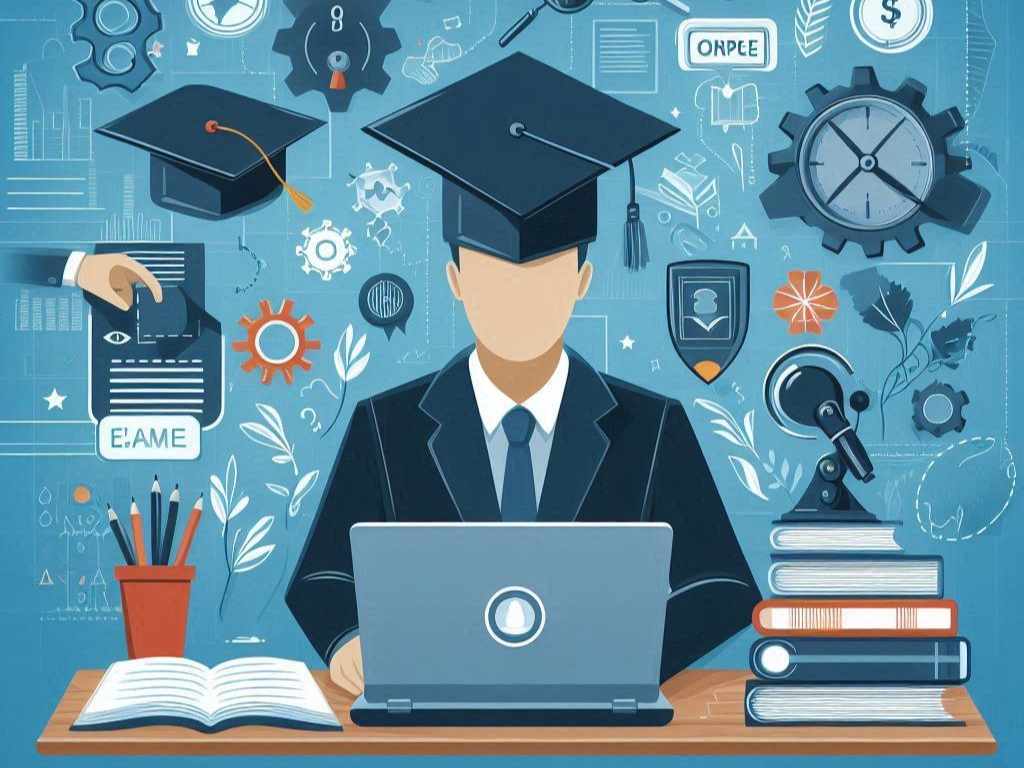In 2024, educational technology is advancing at a rapid pace, and Virtual Reality (VR) and Augmented Reality (AR) are at the forefront of this revolution. These immersive technologies are transforming the traditional learning environment by offering students new, interactive ways to engage with content. Instead of relying solely on textbooks and lectures, students now have the opportunity to experience their lessons in a 3D environment, making education more hands-on, memorable, and engaging.
Understanding VR and AR in Education
Virtual Reality (VR) is a fully immersive technology that allows students to explore and interact with a completely virtual environment. By using VR headsets, students can be transported to different worlds, times, or scenarios that are designed to enhance their learning experience. On the other hand, Augmented Reality (AR) overlays digital content onto the real world, allowing students to interact with virtual elements in their physical surroundings through devices like smartphones or AR glasses.
The Role of VR and AR in Enhancing Learning
VR and AR offer several benefits that make them powerful tools for education:
1. Immersive Learning Experiences
One of the most significant advantages of VR and AR is their ability to create immersive learning experiences. Students can explore historical landmarks, conduct virtual science experiments, or even walk through a cell in biology. These immersive experiences help students grasp complex topics that might be difficult to understand through traditional methods.
2. Hands-on Learning
With AR and VR, learning becomes more hands-on. Instead of merely reading about a subject, students can interact with 3D models, participate in virtual lab activities, or simulate real-world scenarios. This active participation helps students retain information more effectively than passive learning.
3. Safe Learning Environment
VR creates a safe space for students to explore dangerous or hard-to-access environments. For example, VR can simulate laboratory experiments involving hazardous chemicals or let students practice flying a plane without any real-world consequences. This allows for experiential learning without the risk of physical harm.
Impact on Different Educational Fields
1. Science and Engineering
In fields like science and engineering, AR and VR are revolutionizing how students engage with complex subjects. VR can simulate environments such as the inside of a human body for biology students or outer space for astronomy learners. AR helps engineering students visualize intricate machine designs and test their functionality in real-time, aiding comprehension.
2. History and Social Studies
History lessons come alive with VR. Students can visit ancient cities, explore historical events, and even interact with key historical figures through VR simulations. AR adds a layer of information to real-world locations, enabling learners to explore local history with rich multimedia overlays while being physically present in the location.
3. Art and Design
For art and design students, AR and VR allow for the creation of 3D models that can be manipulated in a virtual space. Artists can paint, sculpt, and design within a VR environment, allowing them to explore new creative processes that aren’t possible in the real world. It also enhances collaborative projects, as students can work on virtual creations together in real-time, no matter where they are located.
Advantages of VR and AR in Classrooms
1. Enhanced Engagement
AR and VR technologies increase student engagement by turning lessons into interactive, exciting experiences. This keeps students more focused and involved in their learning, compared to traditional methods like lectures or textbook reading.
2. Customizable Learning Experiences
AR and VR can offer personalized learning paths based on a student’s progress, strengths, and weaknesses. Educators can adjust the content to fit individual students’ needs, ensuring that every learner can grasp the concepts at their own pace.
3. Inclusivity and Accessibility
These technologies also enhance inclusivity in classrooms. Students with different learning styles, physical disabilities, or cognitive challenges can benefit from a more personalized, immersive learning experience. For example, VR can simulate experiences for students who are unable to physically participate, while AR can provide additional aids for those who need extra support in understanding concepts.
Challenges in Adopting VR and AR in Education
Despite the many benefits, there are challenges associated with integrating VR and AR in education:
1. High Cost of Implementation
One of the primary challenges is the cost. The hardware required, such as VR headsets and AR-capable devices, can be expensive for many schools, especially in underfunded areas. This makes widespread adoption difficult, particularly in developing countries.
2. Technical Issues
While AR and VR technologies have improved significantly, they are not without their technical difficulties. Glitches, hardware malfunctions, and a lack of technological infrastructure in schools can hinder the smooth use of these tools in the classroom.
3. Need for Teacher Training
Teachers need to be properly trained in the use of VR and AR tools. Without the right support, educators may find it difficult to integrate these technologies effectively into their teaching. Continuous professional development and resources will be crucial for the successful implementation of these tools.
Conclusion
As we move further into 2024, it’s clear that VR and AR are shaping the future of education. By offering immersive, interactive learning experiences, these technologies are making education more engaging, accessible, and tailored to individual needs. Despite the challenges, their potential to revolutionize the classroom is undeniable. With continued development and investment in these tools, VR and AR will undoubtedly become integral parts of modern education.

